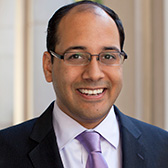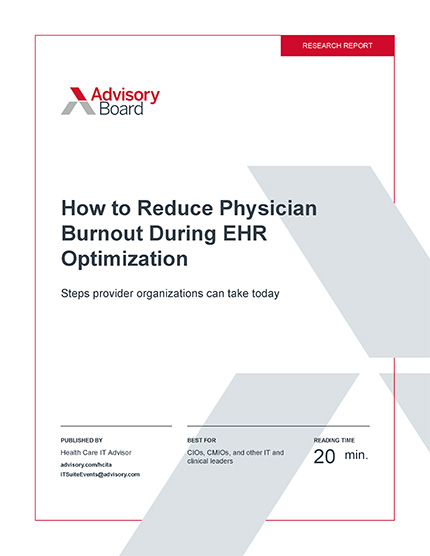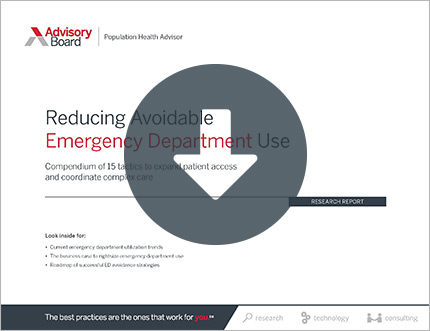Auto logout in seconds.
Continue LogoutRead Advisory Board's take: Three cases when investing in scribes is likely justified
A study published Wednesday in BMJ found that using medical scribes in EDs could help physicians see more patients and save hospitals up to $31.15 per scribed hour—with no significant risk to patient safety.
Why scribes are growing more common (despite limited proof that they save money)
Many physicians report that working with medical scribes—who assist with administrative tasks during patient visits, such as by entering information into EHRs—enables them to spend more of their time caring for more patients.
Little research exists, however, on whether employing scribes leads to a large enough boost to physician productivity to save hospitals money on the whole, or how the presence of scribes affects patient safety.
To help close the research gap, Katherine Walker, director of emergency medicine research for Cabrini Hospital, and her colleagues randomly assigned medical scribes to 88 doctors in five EDs in Australia between November 2016 and January 2018. The study was the first multicenter, randomized study to evaluate scribes' impact on physician productivity or patient safety incidents.
Researchers collected data from 589 shifts with scribes and 3,296 shifts without scribes. The researchers also tracked self-reported patient safety incidents associated with scribed shifts.
Results show increase in productivity—and no significant impact on patient safety
The study found that medical scribes increased physicians' productivity throughout most of the ED sites. Across all shifts, the presence of scribes increased the number of patients seen per doctor per hour by almost 16%. The biggest increase in productivity was seen in primary consultations, during which scribes increased the number of patients seen by more than 25%.
The researchers saw no change in door-to-doctor time across ED sites, but found that patients' length of stay was 19 minutes shorter during scribed shifts.
Further, there was no significant affect in patient safety, according to the researchers. One in 300 scribed appointments included a patient safety incident, mostly involving misidentifying a patient or ordering the wrong tests—but in half of the incidents, the scribe actually helped prevent an error from occurring, according to researchers. None of the incidents led to major harm.
On the whole, the study found that, by increasing physician productivity and reducing the amount of time patients spend in the hospital, scribes could save hospitals up $26.15 per hour if hospitals pay for the scribes' training, and $31.15 per hour if the scribes pay for their own training.
Scribes offer 'significant' benefits for EDs, researchers say
While the ED sites were "broadly representative of Australian [EDs]," the researchers acknowledged the findings might not apply to all hospitals and that "future work should include testing scribes in other settings and countries."
Even so, they argued, "[g]iven the strong preference of physicians for working with a scribe, no effect on the patient experience, minimal risk, and the productivity and throughput gains outlined, ED and hospital administrators should strongly consider the potential local utility of scribes in their workforce and financial planning" (BMJ/Medical Xpress, 1/30; Walker et al., BMJ,1/30).
Advisory Board's take

Hamza Hasan, Practice Manager, Medical Group Strategy Council
This study adds to an increasingly robust literature that's found a positive impact from scribes on a number of measures, like enhancing physician efficiency, improving physician satisfaction, and increasing coding accuracy. And this impact is not just limited to hospital settings, but has been found in smaller practice, medical group, and outpatient settings.
“Estimates suggest that the number of scribes will grow almost five-fold by 2020”
With growing EMR use, many doctors report feeling like they just practice "desktop medicine." Physicians in ambulatory settings spend an average of 73% of their time on administrative, non-clinical tasks—a demand closely tied to burnout. In response, many medical groups are turning to scribes to ease their burden. According to one survey, nearly 20% of physicians report using scribes, with 10% planning on hiring them in the near future. And estimates suggest that the number of scribes will grow almost five-fold by 2020 to over 100,000—with one scribe for every nine physicians.
Yet, many leaders still remain hesitant to employ scribes. When we spoke with leaders around the country, we often heard that scribes were too expensive, acted as a crutch for physicians, or were simply not sustainable due to high turnover rates.
Therefore, we aimed to find when the investment in scribes was justified. We believe that it is in three situations:
- Productivity enhancement. We spoke to several medical groups who reported a significant ROI on their investment with scribes when they were intentionally engaged to enhance productivity, particularly in improving chart closure, patient satisfaction, quality measures, and coding accuracy. One medical group we spoke to had piloted scribes with four physicians and reported an annualized $400,465 net profit. Yet, to truly be successful, these metrics have to be targeted with a clear purpose and carefully tracked.
- Wellness improvement. We interviewed several physicians who said they were on the brink of quitting their practice before a scribe reduced their administrative burden. When deployed to help these docs, scribes can lighten the load and prevent early retirement. And, when you consider that a scribe is usually around a $50,000 annual investment, and the conservative cost of primary care physician turnover is around $750,000, the financial calculus can clearly support this strategy.
- Strategic investment. Other clinics noted that deploying scribes allowed them to achieve strategic goals they otherwise would have been unable to meet. For instance, UNC Healthcare was struggling to open new patient appointments and engage physicians in access expansion. They offered scribes to physicians willing to add four new patient slots to their schedule per half-day—improving patient access, increasing volumes, and allowing for greater productivity. Scribes can also help practices retain top talent and recruit new physicians.
Some Caution Required
Scribes won't be right for every practice. To achieve financial savings, practices should have unmet demand that could be met by increased productivity through scribes. They also need to be targeted to physicians who are willing to modify their workflows to fully integrate and leverage the scribe. Medical group leadership must establish clear expectations and track provider performance to ensure their ongoing financial viability. Finally, the overhead cost of scribe programs—hiring, training, managing and high turnover rates—often point to outsourcing as the less expensive option. Long-term, practices may want to consider more automated scribe options like Augmedix or Robin as technology continues to evolve.
To learn more about our research on the topic, download The Medical Group Leader's EMR Optimization Playbook which offers case studies and insights into how best to deploy scribes—and five other tactics to help you alleviate the EMR's growing burden on physician practice.
Webconference: How to win physician buy-in for your patient experience efforts
Join us on Tuesday, February 19 at 1 pm ET to learn about physicians’ unique role as the "influencer-in-chief" of patient experience and how you can partner with physicians to drive patient experience initiatives.
Don't miss out on the latest Advisory Board insights
Create your free account to access 1 resource, including the latest research and webinars.
Want access without creating an account?
You have 1 free members-only resource remaining this month.
1 free members-only resources remaining
1 free members-only resources remaining
You've reached your limit of free insights
Become a member to access all of Advisory Board's resources, events, and experts
Never miss out on the latest innovative health care content tailored to you.
Benefits include:
You've reached your limit of free insights
Become a member to access all of Advisory Board's resources, events, and experts
Never miss out on the latest innovative health care content tailored to you.
Benefits include:
This content is available through your Curated Research partnership with Advisory Board. Click on ‘view this resource’ to read the full piece
Email ask@advisory.com to learn more
Click on ‘Become a Member’ to learn about the benefits of a Full-Access partnership with Advisory Board
Never miss out on the latest innovative health care content tailored to you.
Benefits Include:
This is for members only. Learn more.
Click on ‘Become a Member’ to learn about the benefits of a Full-Access partnership with Advisory Board
Never miss out on the latest innovative health care content tailored to you.


